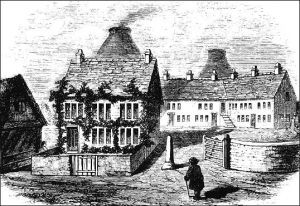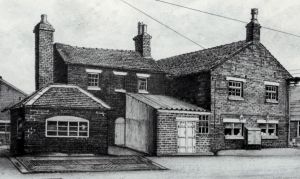- History
- Pottery
- Industry
Housing

As the Staffordshire pottery industry established itself in the eighteenth century, master potters rose from the workers ranks. Ingenious, thrifty men began to build larger potteries and employ more men, fanning the flames of industrialization. It was not unusual for this new generation of master potters, who worked daily in their factories, to want to live nearby. At the early eigtheenth century Ivy House Works in Burslem the house was barely separated from the factory workshops.
 Josiah Spode I probably lived alongside his pottery when he first acquired the business. It is traditionally believed that he occupied what might have been a pleasant, roomy house built in the prevailing Georgian style. Over the years as the works expanded the house and factory buildings integrated. All that seems recognizable as a dwelling is the upper storey of three typically Georgian sash windows peeking over later additions. As well as his own house and factory, Josiah Spode I owned extensive property within the town of Stoke and received rents from tenants who may have been in his employ.
Josiah Spode I probably lived alongside his pottery when he first acquired the business. It is traditionally believed that he occupied what might have been a pleasant, roomy house built in the prevailing Georgian style. Over the years as the works expanded the house and factory buildings integrated. All that seems recognizable as a dwelling is the upper storey of three typically Georgian sash windows peeking over later additions. As well as his own house and factory, Josiah Spode I owned extensive property within the town of Stoke and received rents from tenants who may have been in his employ.
With the precipitous growth of the pottery industry in the third quarter of the eighteenth century, some of the wealthier potters like Josiah Wedgwood, John Wood, and William Adams built mansions in pleasant surroundings adjacent to their factory premises. Not surprisingly, after his prosperous lifestyle in London, Josiah Spode II decided to develop his own estate at Penkhull, a high point of land overlooking the town of Stoke-upon-Trent and the Spode factory.
More on the estate of Josiah Spode II
More on the houses of the workers
